calsfoundation@cals.org
Marylake Monastery
Founded in 1952 and located thirteen miles south of Little Rock (Pulaski County), Marylake Monastery was a residence for Discalced Carmelite friars of the Province of St. Thérèse, which includes Louisiana, Texas, Arkansas, and Oklahoma. The monastery was a novitiate for the province, which is a type of religious “boot camp” for young men entering the Carmelite Order of the Roman Catholic Church. As solitude is sought as an aid to contemplative prayer, the rural site was chosen because it offered a more secluded setting than the former novitiate within the urban setting of San Antonio.
In 1895, brothers of the Tull family bought a 400-acre tract in East End (Saline County) and dammed Clear Creek to form a fifty-acre lake. In 1901–02, Abraham, Archibald, and Elijah Tull bought land just to the south in Grant County. William Baxley bought the property in 1906 and established a grist mill, but the dam soon broke, the lake drained, and Baxley lost the land. The land lay unoccupied for eleven years until Judge R. M. Mann, after having repaired the dam and built a small clubhouse, sold the lake and its surrounding 240 acres to the Shriners for $23,000. The Shriners, in the spring of 1926, laid the foundations on a hill for a stone castle to be used as a country club for members in Little Rock. The hundred-pound stones were hauled into Saline County from Pinnacle Mountain. The castle’s front ornamental entrance at the lake side leads up to the second-floor main area’s principal back entrance. The grounds included a golf course.
Following the stock market crash of 1929, the Shriners defaulted on a $99,000 loan, and the bank in turn sold the property to eight businessmen, who then sold it to Dr. John R. Brinkley, a notorious medical quack, in 1937. After Brinkley filed for bankruptcy, his associate, Dr. H. D. Osborn, kept the golf course running for a couple of years and continued to perform Brinkley’s signature operation, the implantation of goat testicles into aging men in an attempt to restore sexual virility. In its heyday, this golf course was the second-largest in the state, with the only one larger in Texarkana (Miller County). The estate was then gained by Baptist Hospital and was used as a convalescent home before again going up for sale. R. G. LeTourneau bought the property in 1947. Because Baptist Hospital had put a restriction on its sale declaring that the property had to be used for Christian purposes, LeTourneau let his wife, Evelyn, run the spot as a Christian boys’ camp. She later sold it to the Carmelites.
In 1952, Father Evarist V. Foix was looking for a secluded place to found a monastery to train young men in prayer and spirituality. The Carmelite religious order of the Catholic Church began negotiations, buying the castle by the lake for $60,000. It was formally dedicated for service on July 25, 1952, with Bishop Albert Fletcher presiding.
The Discalced Carmelite Friars have managed the estate since then. In the 1960s, Herman Estaun set up a provincial cemetery on what had been the ninth hole of the old golf course and built a suspension bridge over the lagoon that separates the cemetery from the monastery.
In the 1960s, as many as twelve novices, nine brothers, and six priests were in residence. The monastery ran a farm with chickens, dairy cows, bulls, and a few acres cultivated for vegetables. The cattle and chickens were sold in the 1970s, and the majority of the land was turned into a loblolly pine tree farm in the 1980s, at which time the golf course fairways began to disappear. In 1977, the interior living area was gutted and rebuilt, adding insulation, double-paned windows, and central air conditioning. Each cell (room) was doubled in size and given a sink.
By 2014, three priests and one brother lived at Marylake. What was formerly Dr. Brinkley’s administration building was used for weekend retreats in Hispanic ministry. Outreach to the wider community included a brother working in the city’s healthcare by offering services to the homeless and assisting the sick with daily activities; this included HIV testing, attendance of funerals of young people who died of AIDS, and follow-up with grieving family members. The priests also traveled throughout the Southwest holding retreats and conferences on prayer, mysticism, and spirituality. Workshops were held at the monastery annually for nuns involved in the formation of religious life.
The monastery offered a three-bedroom guest house, a one-bedroom guesthouse, and a lakeside hermitage to those seeking solitude for prayer. The facilities have offered weekend youth retreats, as well as limited space for private retreats. The priests traveled to Catholic parish churches on weekends. Marylake hosted an annual Christmas dinner for the parish priests of Arkansas and an annual retreat each fall for all the Carmelite friars in Oklahoma, Texas, and Arkansas.
On July 16, 2023, Bishop Anthony Taylor announced that Marylake Monastery would no longer host a permanent community; two priests living there were assigned to other duties, but a new superior was named for the site with a responsibility to minister to Discalced Carmelite friars and Carmelite nuns in the Diocese of Little Rock. As reported in the Arkansas Catholic, the Carmelite friars were “discerning a new use for the property.”
For additional information:
Discalced Carmelite Friars— Province of St. Thérèse. http://www.carmelitefriarsocd.com/ (accessed July 14, 2023).
Jones, Scott. “The Founding of the Discalced Carmelite Monasteries of Saint Teresa and Marylake.” Pulaski County Historical Review 50 (Spring 2002): 2–12.
Woods, James M. Mission and Memory: A History of the Catholic Church in Arkansas. Little Rock: August House Publishing Co., 1993.
Zakrzewski, Katie. “Carmelites Discerning the Future of Marylake Monastery.” Arkansas Catholic, August 11, 2023. https://www.arkansas-catholic.org/news/article/7931/Carmelites-discerning-the-future-of-Marylake-Monastery (accessed August 14, 2023).
John Michael Payne
Dallas, Texas
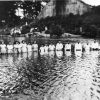 Religion
Religion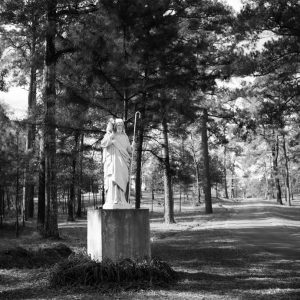 Christ Statue
Christ Statue 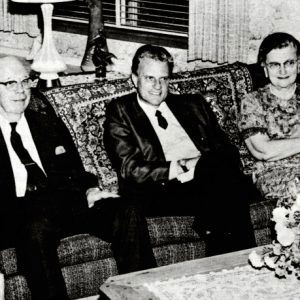 LeTourneaus with Billy Graham
LeTourneaus with Billy Graham 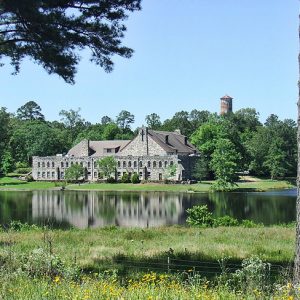 Marylake Monastery
Marylake Monastery  Father Raphael
Father Raphael 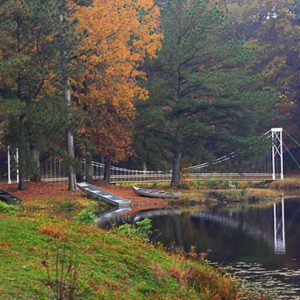 Suspension Bridge
Suspension Bridge 



Comments
No comments on this entry yet.